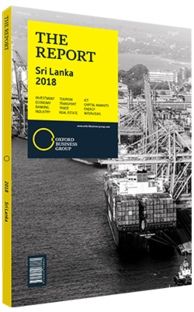Sale and usage of smartphones growing steadily in Sri Lanka
The Sri Lanka mobile internet market is experiencing fast, healthy growth. As technology improves and consumer habits change, the online world is quickly moving from desktop to handheld devices. In some ways Sri Lanka is already ahead of the curve; it was the first country in South Asia to adopt 4G and is making progress towards the rollout of 5G. However, execution has so far been less than perfect, and performance needs to be improved in some areas.
Increased Usage
The number of mobile broadband subscribers has increased from 485,000 in December 2011 to 4.7m in December 2017, according to the Telecommunications Regulatory Commission of Sri Lanka. Moreover, mobile subscriptions overtook fixed-line subscriptions in 2011, with the latter now being four times larger than the former. While internet usage is increasing, the percentage of households with computers, either desktops or laptops, fell in the first half of 2016 to 22.5% from 24.4% a year earlier. In terms of desktops computer ownership, the number fell from 15.3% to 13.1%. The computer literacy rate, however, rose from 26.6% to 27.5%, over the same period, rising to 38.5% in urban areas, though these figures remain low by international standards. “There is a common gap in digital technology literacy across several segments in Sri Lanka. While there are some good initiatives addressing this issue, there is still a lot of room for more,” Suren Karunakaran, general manager at Zion Technologies, told OBG. “People need to be educated about technology and digitisation, and this should start at an early stage.” Mobile devices had a 73.7% market share in February 2017, compared with a 24.8% for desktops. A 2017 survey carried out by market research company Nielsen found that 95% of connections were made via mobile devices. Furthermore, government statistics suggest that smartphone use is on the rise, though the Statistics Department has not historically tracked this exact metric. Nevertheless, the country currently has an estimated 5.4m Facebook users, 85% of whom connect through handsets. Furthermore, the country has more than 7.5m Viber accounts, with Viber being the most commonly downloaded app in 2017.
Selling Fast
In early 2017 retailer Singer Sri Lanka reported that the sale of tablets was up 105% year-on-year (y-o-y), while smartphone sales were up 54% y-o-y. In 2016 the company sold 488,500 smartphone units, compared with 380,000 a year earlier. Singer, which is the sole agent for Huawei products, and also sells devices by Sony, Apple and Samsung, has set up 150 phone corners in its outlets. Other retailers note similar sales trends and add that much of the demand is driven by customer preference, with many seeking to upgrade their mobile devices to smartphones.
As of October 2017 Samsung handsets were the top selling devices in the country, with Samsung’s share at 43.9% compared with 16.9% for Huawei, 7.9% for Apple, 3.8% for Oppo and 3.4% for HTC. Nevertheless, over 2017 Samsung lost market share while Huawei’s share increased. In February 2018, Samsung had 43.4% of the total and Huawei 19.8%. Furthermore, Huawei is looking to grow its market share in Sri Lanka with the introduction of new smartphone models.
In part, the growth of this segment has been driven by price. Sri Lanka has some of the cheapest mobile bandwidth in the world, average rates were less than $0.86 per month in 2016, according to the International Telecommunications Union. Furthermore, taxes for both fixed and mobile internet services are relatively low, at 19.7%, while phone calls are taxed at 49.7%.
Need for Speed
Despite low costs and increasing popularity, performance is still lacking. According to wireless coverage firm Open Signal, Sri Lanka has the second-lowest 4G availability among the 77 countries surveyed. The country also ranked in the bottom 15 in terms of speed, at 13.04 Mbps, with Singapore topping the ranking at 46.64 Mbps. In terms of overall mobile speed, the country was also near the bottom of the league tables, with an average speed of 3.96 Mbps.
You have reached the limit of premium articles you can view for free.
Choose from the options below to purchase print or digital editions of our Reports. You can also purchase a website subscription giving you unlimited access to all of our Reports online for 12 months.
If you have already purchased this Report or have a website subscription, please login to continue.

